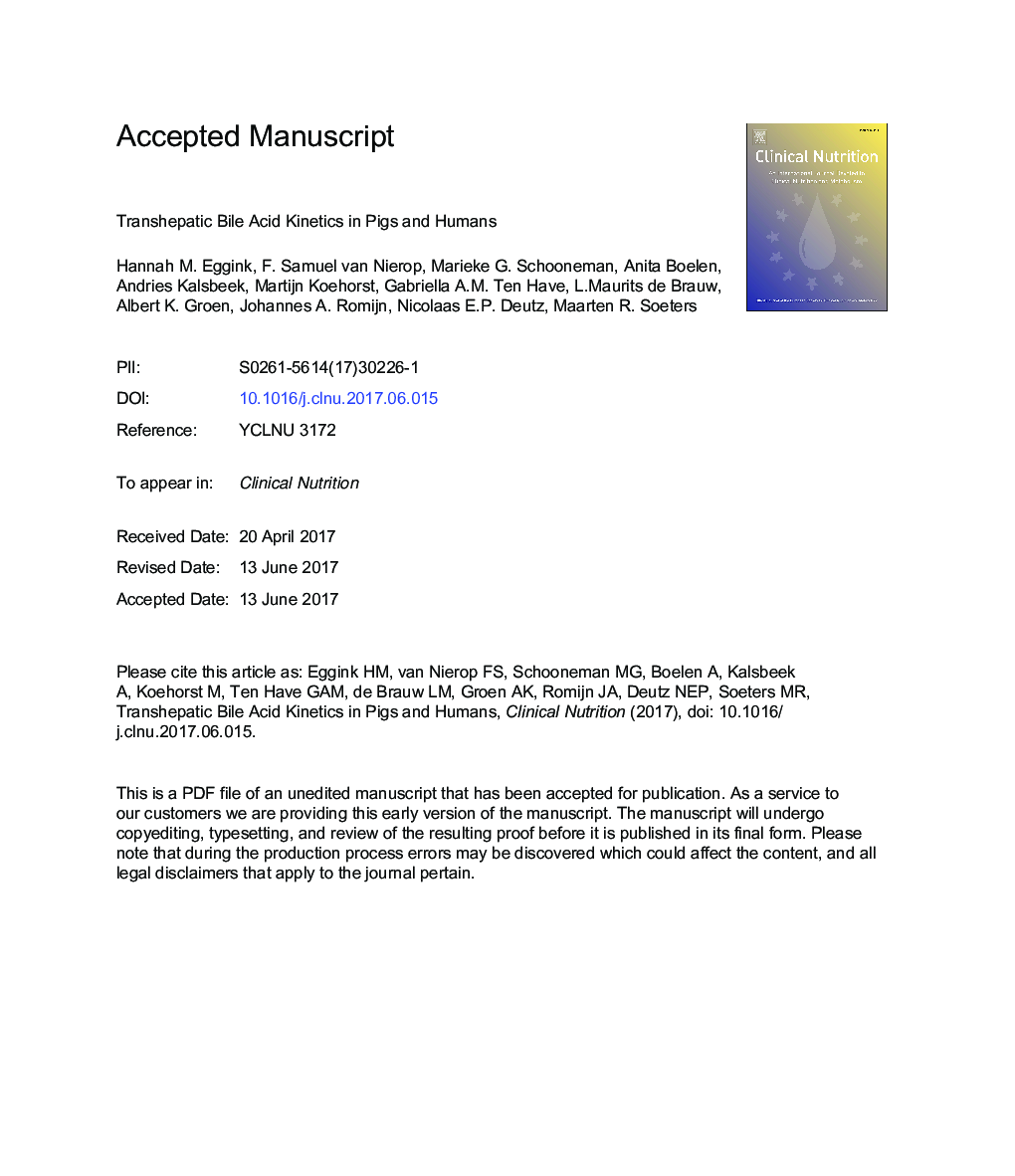| Article ID | Journal | Published Year | Pages | File Type |
|---|---|---|---|---|
| 8586726 | Clinical Nutrition | 2018 | 39 Pages |
Abstract
The liver selectively extracts most BAs and BAs with highest affinity for the most important metabolic BA receptor, TGR5, are typically low in both porcine and human peripheral circulation. Our findings raise questions about the magnitude of a peripheral TGR5 signal and its ultimate clinical application.
Keywords
SHPHDCACDCABSEPFXRGLP-1SPLUDCAEC50FGFTCANtcpPAHcaval veinCYP7A1DCAOATPLOQTGR5AUCBAsfarnesoid X receptorLC/MS/MSAbdominal AortaAsbtLCAChenodeoxycholic acidDeoxycholic acidtrichloroacetic acidLithocholic acidHyodeoxycholic acidPara-aminohippuric acidCholic acidBile acidsOstUrsodeoxycholic acidapical sodium-dependent bile acid transportermEHanalysis of varianceANOVAlower limit of quantificationorganic solute transporterbody mass indexBMIfibroblast growth factorPDVarea under the curveknock-outhalf maximal effective concentrationPortal veinHepatic veinRenal veinPostprandialOrganic anion transporting polypeptideBile salt export pumpglucagon-like peptide 1liquid chromatography tandem mass spectrometryKidneysshort heterodimer partnerPorcine
Related Topics
Health Sciences
Medicine and Dentistry
Critical Care and Intensive Care Medicine
Authors
Hannah M. Eggink, F. Samuel van Nierop, Marieke G. Schooneman, Anita Boelen, Andries Kalsbeek, Martijn Koehorst, Gabriella A.M. ten Have, L. Maurits de Brauw, Albert K. Groen, Johannes A. Romijn, Nicolaas E.P. Deutz, Maarten R. Soeters,
